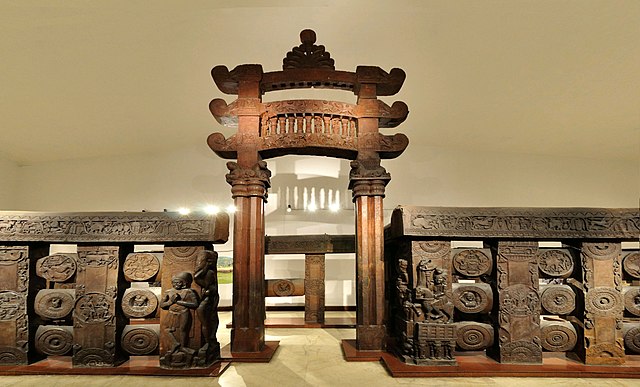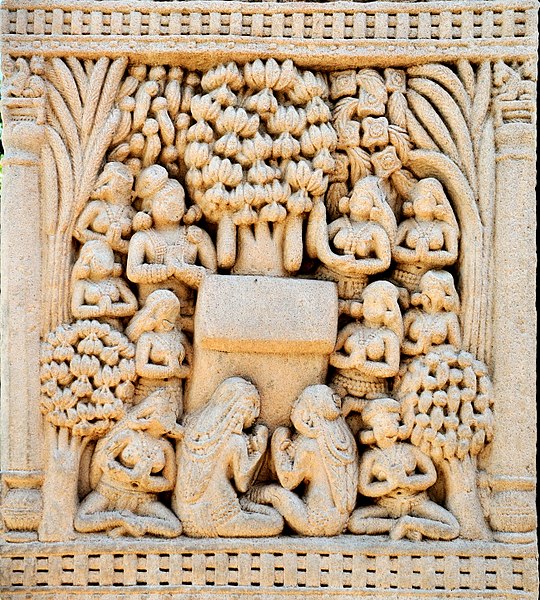The Shunga dynasty was the fifth ruling dynasty of Magadha and controlled most of the northern Indian subcontinent from around 187 to 73 BCE. The dynasty was established by Pushyamitra, after taking the throne of Magadha from the Mauryas. The Shunga Empire's capital was Pataliputra, but later emperors such as Bhagabhadra also held court at Besnagar in eastern Malwa. This dynasty is also responsible for successfully fighting and resisting the Greeks in Shunga-Greek War.
Man on a relief, Bharhut, Shunga period.
Shunga horseman, Bharhut.
Shunga period stupa at Sanchi.
East Gateway and Railings, Red Sandstone, Bharhut Stupa, 2nd century BCE. Indian Museum, Kolkata.
Magadha also called the Kingdom of Magadha or the Magadha Empire, was a kingdom and empire, and one of the sixteen Mahajanapadas, 'Great Kingdoms' of the Second Urbanization, based in southern Bihar in the eastern Ganges Plain, in Ancient India. Magadha was ruled by the Brihadratha dynasty, the Pradyota dynasty, the Haryanka dynasty, the Shaishunaga dynasty, the Nanda dynasty, the Mauryan dynasty, the Shunga dynasty and the Kanva dynasty. It lost much of its territory after being defeated by the Satavahanas of Deccan in 28 BC and was reduced to a small principality around Pataliputra. Under the Mauryas, Magadha became a pan-Indian empire, covering large swaths of the Indian subcontinent and Afghanistan.
Magadha empire under Kanva dynasty
Cyclopean Wall of Rajgir which encircled the former capital of Magadha, Rajgir. Amongst the oldest pieces of cyclopean masonry in the world
King Bimbisara visits the Bamboo Garden (Venuvana) in Rajagriha; artwork from Sanchi.
Magadha kingdom coin, c. 350 BCE, Karshapana








